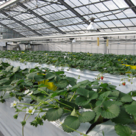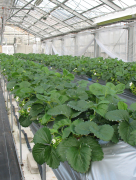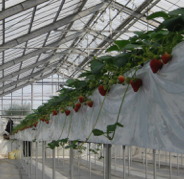Hydroponic Strawberry Current Status

US strawberry production
Strawberry is an important crop in North America. The United States has regions that offer the “best climate” to grow strawberries in open-fields and the technology and cultivar development have been based on open-field production systems. In the US, only a negligible amount is produced in greenhouse using substrates (hydroponics), although the use of hydroponics has many advantages (see CEA BASICS). While other countries expanded greenhouse hydroponic strawberry production over many years, the US was left behind by long relying on open-field production capacity.
Some facts:
US strawberry production: 3 billion lb annually (USDA ERS 2012)
US strawberry harvested acreage: 56,140 acre (USDA ERS 2012)
US greenhouse strawberry area: 22 acre (USDA 2009 census)


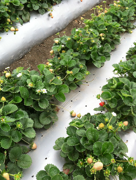
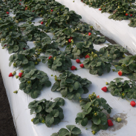
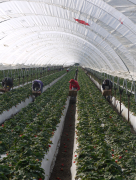
Other countries - Japan as an example
Japan and many other asian countries have a unique production cycle for strawberry. Many years ago, there were apparently still significant amounts of open field strawberry production in Japan but nowadays almost all strawberry production is greenhouse based. However, while the production area increased, hydroponic or soilless culture of strawberry is less common than soil-based system in greenhouse (including high tunnels), mainly due to the high production costs. Use of raised troughs is becoming popular but anecdotally fruit quality is not as good as strawberry from in-ground production (soil culture).
The main production season of strawberry is winter to early spring (November to May). Use of short-day cultivars has been common while day neutral or ever-bearing cultivars are slowly being introduced to supply domestic strawberry during the summer. There are various cropping cycles developed regionally and cultivars are bred and selected to support the regional production of strawberry. Typical strawberry growers use a small section of greenhouse for propagation during summer and plant the rooted runner plants in early fall to start producing in November/December. Soil cultivation requires solarization in mid summer to control soil-borne disease and pests. In soilless culture, growers either renew the substrates every few crops or keep replenishing the substrates until any issue is found. Regardless, the current issue in Japanese strawberry production is 1) reduction of fungicide and pesticide in strawberry production and 2) developing systems for year-round production.
Some facts:
Strawberry production in Japan: 259 million lb (MAFF 2011 data)
Total strawberry production area in Japan: 14,876 acre (MAFF 2011 data)
Greenhouse strawberry production area in Japan: 12,990 acre (MAFF data)
(Updated 8/5/13)
